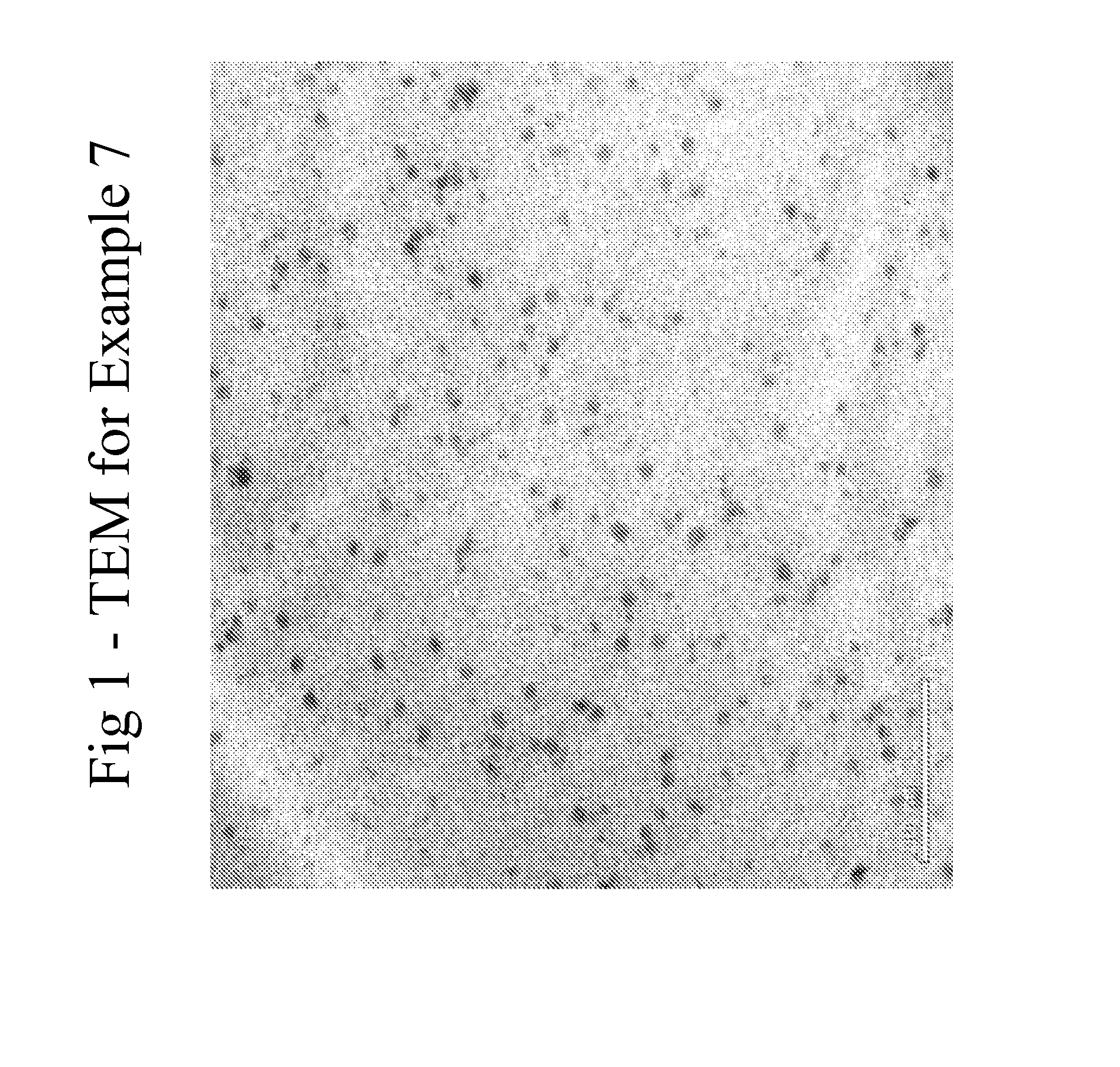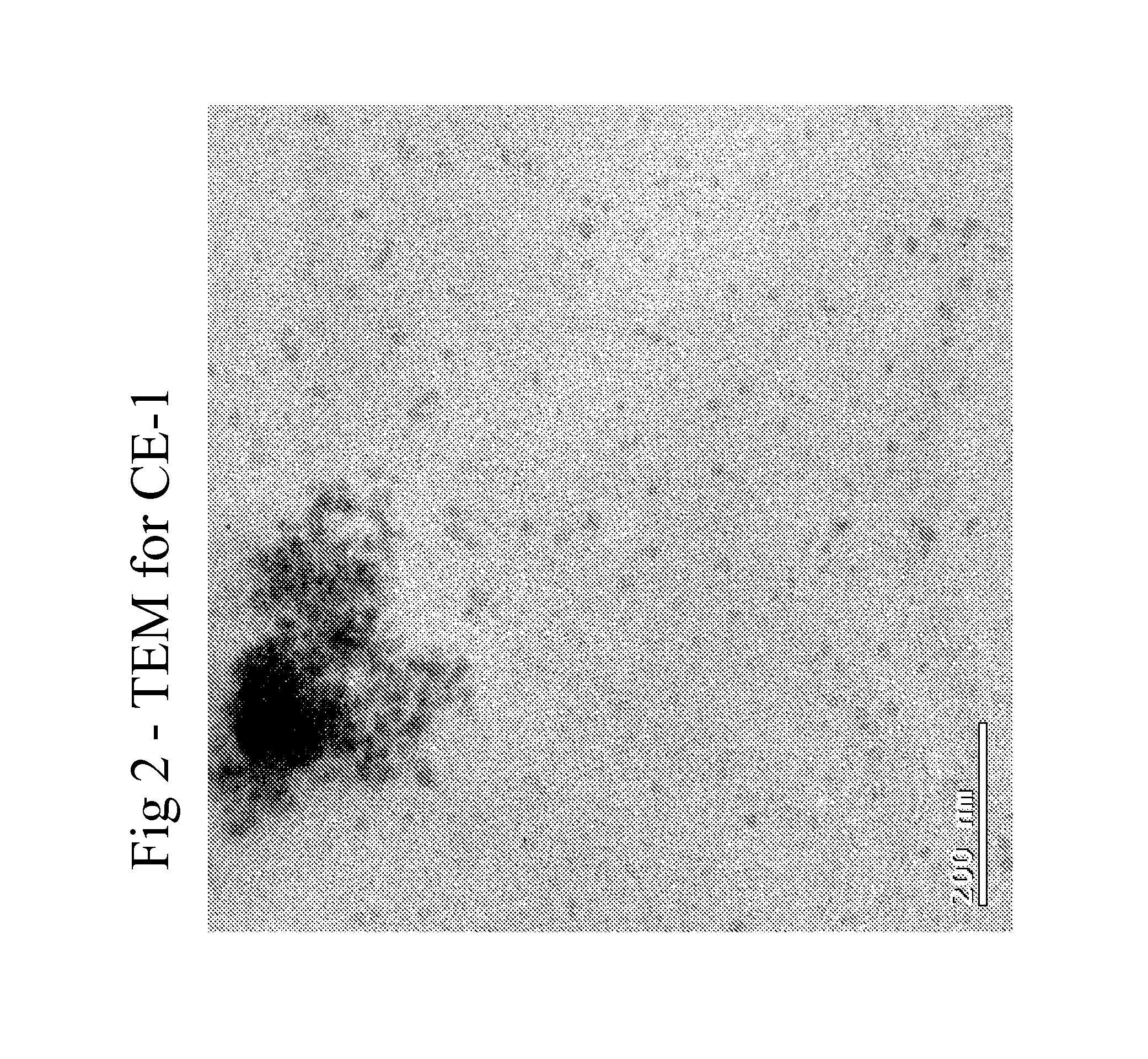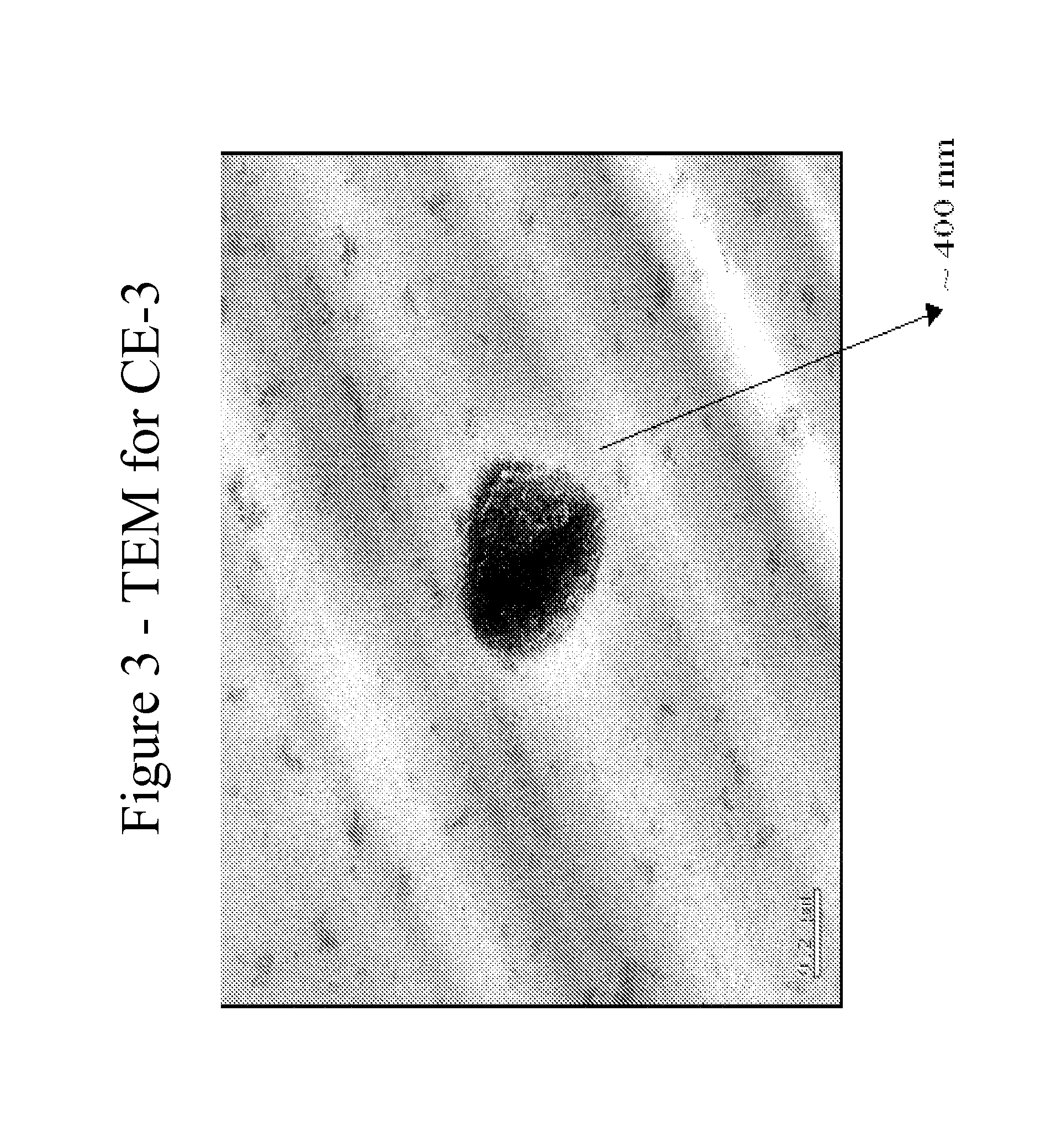Method of making polycarbonate nanocomposites
- Summary
- Abstract
- Description
- Claims
- Application Information
AI Technical Summary
Benefits of technology
Problems solved by technology
Method used
Image
Examples
examples
[0066]Haze was measured in accordance with ASTM B1003 test method by using a BYK Gardner hazemeter. A 2 millimeter thick sample was used for the measurement.
[0067]Hardness was measured using a micro-indentation technique. A Vickers indenter was used to make an indent on a 30 millimeters (mm)×30 mm square and 1.8 mm thick molded plaque of the polycarbonate nanocomposite. The indenter employed in the Vickers test was a square-based pyramid whose opposite sides meet at the apex at an angle of 136°. The indenter tip is pressed into the surface of the material at loads of 0 N to a maximum of 50 N at an indent speed of 50 to 100 microns per minute. The resultant indentation was about 100 micrometer deep and had an area of about 1 square millimeter. The hardness value (HV) is calculated using the following formula:
HV=1.854(F / D2),
with F being the applied load (measured in Newtons) and D2 the area of the indentation (measured in square millimeter).
[0068]Extension-modulus (E-modulus) was dete...
PUM
| Property | Measurement | Unit |
|---|---|---|
| Fraction | aaaaa | aaaaa |
| Percent by mass | aaaaa | aaaaa |
| Percent by mass | aaaaa | aaaaa |
Abstract
Description
Claims
Application Information
 Login to View More
Login to View More - R&D
- Intellectual Property
- Life Sciences
- Materials
- Tech Scout
- Unparalleled Data Quality
- Higher Quality Content
- 60% Fewer Hallucinations
Browse by: Latest US Patents, China's latest patents, Technical Efficacy Thesaurus, Application Domain, Technology Topic, Popular Technical Reports.
© 2025 PatSnap. All rights reserved.Legal|Privacy policy|Modern Slavery Act Transparency Statement|Sitemap|About US| Contact US: help@patsnap.com



